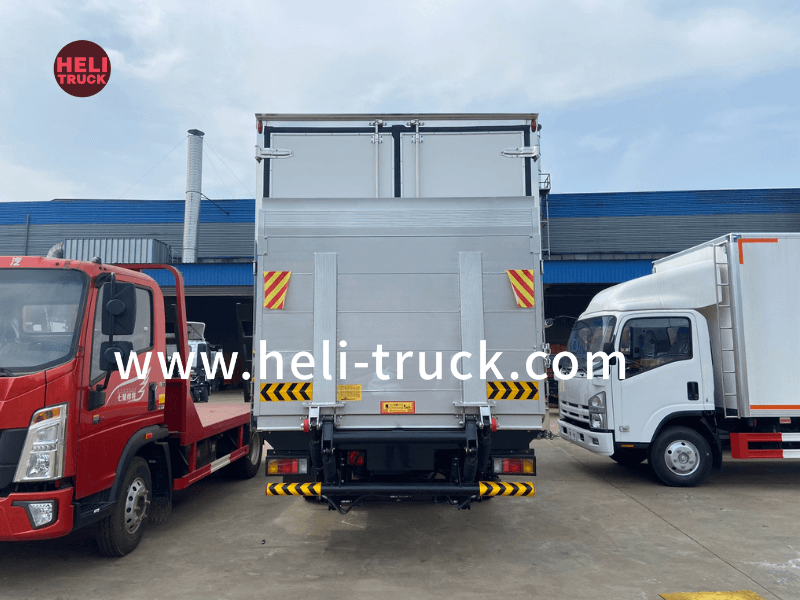Introduction
Garbage truck waste disposal facilities play a crucial role in managing and processing the vast amounts of waste generated by communities. These facilities have evolved over the years, incorporating modern innovations to improve efficiency, sustainability, and environmental impact. In this article, we will explore the various aspects of garbage truck waste disposal facilities, from collection to processing, highlighting the latest technologies and practices that are shaping the future of waste management.
Collection and Transportation
The first step in the waste disposal process is the collection and transportation of waste from households, businesses, and other sources. Garbage trucks are essential in this stage, as they are responsible for picking up waste and transporting it to disposal facilities. Modern garbage trucks are equipped with advanced features such as compaction systems, GPS tracking, and onboard weighing systems to optimize collection routes and maximize efficiency.
One of the key innovations in garbage truck technology is the use of automated side-loading and rear-loading trucks, which streamline the collection process and reduce manual labor. These trucks are equipped with robotic arms that can pick up and empty waste containers with minimal human intervention, improving worker safety and efficiency. Additionally, some garbage trucks are now powered by alternative fuels such as compressed natural gas or electric batteries, reducing emissions and reliance on fossil fuels.
Sorting and Separation
Once waste is transported to a disposal facility, it undergoes a sorting and separation process to segregate different types of materials for recycling, composting, or landfill disposal. Modern waste disposal facilities are equipped with advanced sorting technologies such as optical sensors, magnets, and air classifiers to automate the separation process and increase recycling rates.
Robotic sorting systems are also becoming increasingly common in garbage truck waste disposal facilities, allowing for faster and more accurate sorting of recyclable materials. These systems use artificial intelligence and machine learning algorithms to identify and separate different types of materials, reducing contamination and improving the quality of recycled materials.
Composting and Organic Waste Processing
Organic waste, such as food scraps and yard trimmings, represents a significant portion of the waste stream and can be diverted from landfills through composting and other organic waste processing methods. Garbage truck waste disposal facilities are increasingly incorporating composting facilities and anaerobic digesters to process organic waste into valuable compost and biogas.
Composting is a natural process that breaks down organic materials into nutrient-rich soil amendments, which can be used in agriculture, landscaping, and gardening. Modern composting facilities utilize controlled environments, aeration systems, and biofilters to accelerate the composting process and minimize odors and emissions. In addition, anaerobic digesters are used to convert organic waste into biogas, a renewable energy source that can be used to generate electricity or heat.

Landfill Disposal and Waste-to-Energy
Despite efforts to reduce, reuse, and recycle waste, some materials still end up in landfills due to contamination or lack of viable recycling options. Garbage truck waste disposal facilities play a critical role in managing landfill disposal, ensuring that waste is properly contained and monitored to prevent environmental contamination.
Modern landfills are equipped with leachate collection systems, gas extraction wells, and liners to prevent groundwater pollution and minimize methane emissions. In addition, some landfills are implementing waste-to-energy technologies such as landfill gas-to-energy systems, which capture methane emissions and convert them into electricity or heat. This not only reduces greenhouse gas emissions but also generates renewable energy that can be used to power homes and businesses.
Recycling and Resource Recovery
Recycling is a key component of sustainable waste management, as it conserves natural resources, reduces energy consumption, and minimizes environmental impacts. Garbage truck waste disposal facilities play a crucial role in recycling by collecting, sorting, and processing recyclable materials such as paper, plastic, glass, and metal.
funny post are equipped with state-of-the-art equipment such as shredders, balers, and optical sorters to process recyclable materials efficiently and cost-effectively. These facilities can separate different types of materials and remove contaminants to produce high-quality recycled products for use in manufacturing and other industries.
In addition to traditional recycling, some garbage truck waste disposal facilities are exploring innovative resource recovery technologies such as pyrolysis, gasification, and chemical recycling. These technologies convert waste materials into valuable products such as biofuels, chemicals, and construction materials, providing economic and environmental benefits.
Conclusion
Garbage truck waste disposal facilities play a vital role in managing and processing the vast amounts of waste generated by communities. By incorporating modern innovations such as automated collection systems, robotic sorting technologies, composting facilities, and waste-to-energy systems, these facilities are improving efficiency, sustainability, and environmental performance.
As we look to the future of waste management, it is essential to continue investing in advanced technologies and practices that prioritize waste reduction, resource recovery, and environmental protection. By working together to implement innovative solutions, we can create a more sustainable and resilient waste management system for generations to come.
